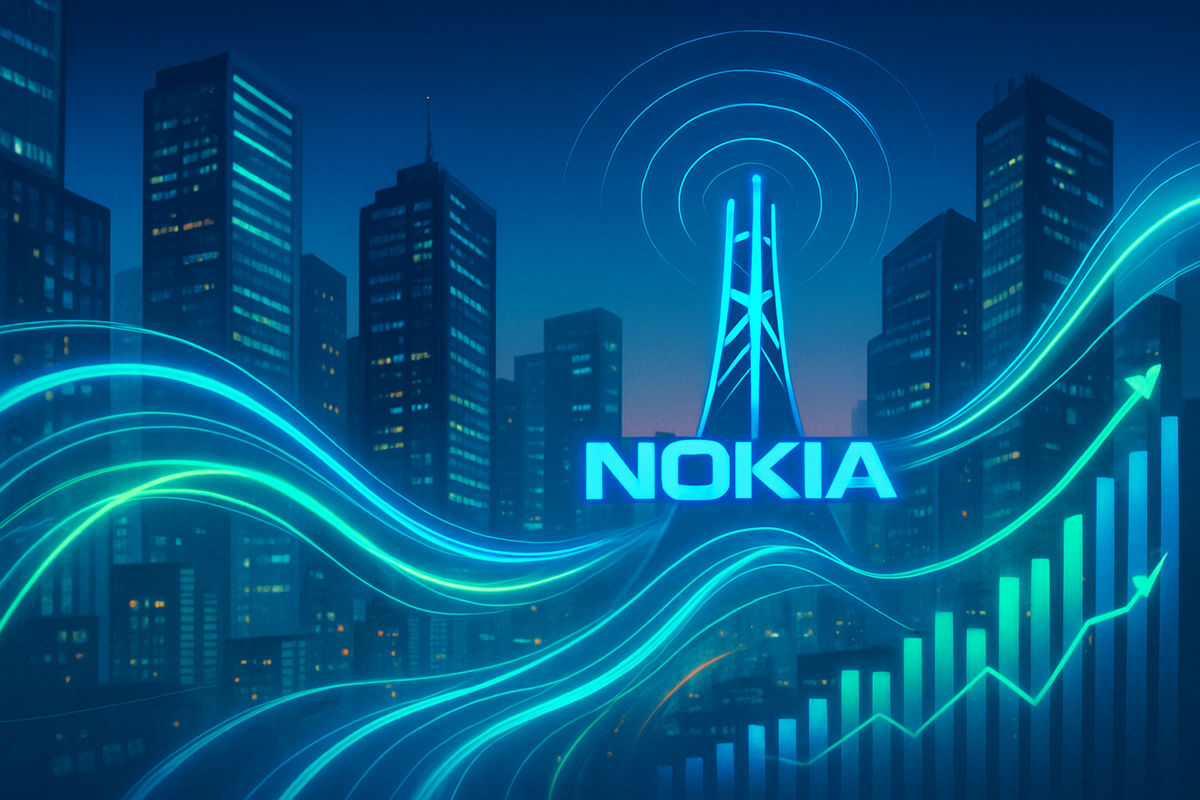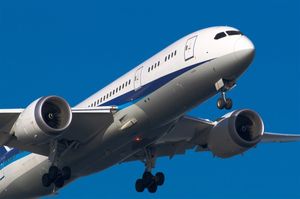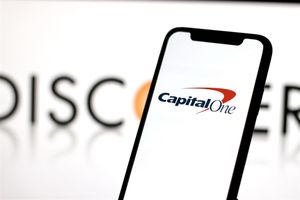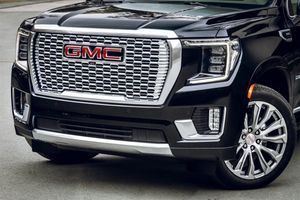
Helsinki, Finland – Nokia Corporation (NYSE: NOK) has recently experienced a significant uplift in its stock performance, driven by a wave of positive sentiment stemming from promising advancements in its 5G technology. The Finnish telecommunications giant, a pivotal player in the global rollout of next-generation networks, has seen its shares climb, reflecting renewed investor confidence in its strategic direction and technological leadership. This surge underscores the critical role Nokia's innovative 5G solutions are playing in the rapidly evolving digital landscape, positioning the company for substantial growth in a fiercely competitive market.
The latest rally, including an impressive 11% jump on October 23, 2025, reaching its highest level in over three years, has added approximately 3 billion euros to Nokia's market valuation. This notable ascent is largely attributed to better-than-expected third-quarter adjusted profits, propelled by robust demand for AI and cloud services, alongside continued strong operator investments in 5G Core. As the world accelerates its adoption of 5G infrastructure, Nokia's strategic wins and technological breakthroughs are clearly resonating with investors, signaling a potentially transformative period for the company.
Nokia's Strategic 5G Offensive and Market Triumph
Nokia's recent ascent in the financial markets is not merely a fleeting trend but the culmination of a deliberate and aggressive strategic offensive in the 5G arena. At the heart of this success lies the company's robust AirScale Radio Access Network (RAN) portfolio, significantly bolstered by its proprietary ReefShark System-on-Chip technology. Introduced in 2018, the ReefShark chip has been a game-changer, enabling high-performance, energy-efficient 5G networking that resonates with operators increasingly focused on sustainability and operational cost reduction. This technological bedrock is complemented by Nokia's advancements in virtualized and AI-RAN solutions, aimed at enhancing network agility and scalability, and its cloud-native 5G Core offerings, which have propelled the company to a leading market share position in Voice Core (excluding China) in the first half of 2025.
A clear timeline of strategic moves underscores Nokia's focused approach. After divesting Alcatel Submarine Networks (ASN) in December 2024 to concentrate on its core network infrastructure, Nokia secured a multi-year extension of its strategic partnership with T-Mobile US (NASDAQ: TMUS) in April 2025 to expand 5G coverage across the U.S. This was followed by a significant "5G deal" with VodafoneThree (LSE: VOD) in the UK in September 2025, where Nokia became a new supplier for modernizing approximately 7,000 sites. October 2025 proved to be a particularly strong month, with an extended partnership with Vodafone (LSE: VOD) and Vodacom (JSE: VOD) across Europe and Africa, and the announcement of robust Q3 2025 results that saw net sales grow 12% year-over-year, exceeding operating profit expectations. These results were driven by strong demand in optical networks, cloud services, and increasing customer interest in AI and data center solutions.
Beyond these landmark contracts, Nokia has been active on multiple fronts. Product launches include the Nokia 360 Camera, the world's first 5G 360-degree camera for B2B applications, specialized 5G radio solutions for railway modernization, and a quantum-safe 50G PON platform, demonstrating a commitment to future-proofing networks. Strategic partnerships have also been crucial, notably with T-Mobile US at its AI-RAN Innovation Centre, KONGSBERG Defence & Aerospace (OSE: KDA) for secure military 5G networks, and a foundational role in the AI-RAN Alliance alongside industry giants like Amazon Web Services (NASDAQ: AMZN), Ericsson (NASDAQ: ERIC), Microsoft (NASDAQ: MSFT), NVIDIA (NASDAQ: NVDA), and Samsung (KRX: 005930). These collaborations highlight Nokia's intent to integrate AI into every facet of network operations, from spectral efficiency to edge services.
The market's reaction has been unequivocally positive. Analyst upgrades from major brokerages have shifted to "Outperform," citing undervalued fundamentals and improving execution. The strong Q3 2025 financial performance, coupled with a healthy trailing-12-month free cash flow of $1.7 billion and an attractive 3.7% dividend yield, has further solidified investor confidence. While the company has faced historical challenges and intense competition from rivals like Ericsson (NASDAQ: ERIC) and Huawei (SHE: 002502), Nokia's renewed focus on innovation, strategic partnerships, and expansion into high-growth vertical markets is seen as a strong indicator of its long-term potential. The appointment of Justin Hotard as President and CEO, with his background in AI infrastructure and data centers, has also been interpreted as a clear signal of Nokia's sharpened strategic direction.
Shifting Tides: Winners and Losers in the 5G Race
Nokia's resurgence in the 5G market is sending ripple effects across the telecommunications and technology sectors, creating a dynamic landscape where some players stand to gain, while others face intensified competition. The Finnish giant's strategic wins and technological advancements are forcing competitors to adapt and network operators to carefully consider their infrastructure investments.
Nokia's Competitors: A Mixed Bag
For Ericsson (NASDAQ: ERIC), Nokia's primary Nordic rival, the situation is complex. While Ericsson maintains a strong position in the RAN and core market, and has made significant strides in North America, notably with a substantial Open RAN deal with AT&T (NYSE: T), Nokia's gains in other regions and its focus on energy-efficient solutions present a direct challenge. Ericsson also faced a decline in its 2023 5G network market share and H1 2024 revenue, indicating that the overall market is contracting in some areas, making Nokia's targeted growth even more impactful. Both companies are battling for market share in a mature 5G deployment cycle, and each Nokia win often means a lost opportunity for Ericsson.
Huawei (SHE: 002502), despite ongoing U.S. sanctions, remains a formidable force, especially in its home market of China. Surprisingly, Huawei outperformed both Ericsson and Nokia in 5G network market share in 2023, largely due to robust growth within China, where it holds a dominant 60% share. Huawei's significant R&D spending, outstripping that of Ericsson and Nokia combined, signals a long-term commitment to technological leadership, including in 5.5G. However, its exclusion from key Western markets due to geopolitical tensions has directly opened doors for Nokia and Ericsson elsewhere.
Samsung (KRX: 005930) holds a relatively smaller slice of the global network market, and its network division sales saw a significant drop in H1 2024. While Samsung is a key player in virtualized RAN (vRAN) and Open RAN, particularly in North America and Japan, it lacks the comprehensive offerings of its larger rivals. Nokia's end-to-end portfolio and integrated solutions could make it harder for Samsung to gain significant traction, though Samsung's strategic focus on Open RAN and potential interest in acquiring Nokia's mobile network assets (though denied by Nokia) indicates its ambition to scale up.
Network Operators: Balancing Cost and Innovation
Network operators, such as T-Mobile US (NASDAQ: TMUS), Vodafone (LSE: VOD), Vodacom (JSE: VOD), and Bharti Airtel (NSE: BHARTIARTL), are direct beneficiaries of Nokia's advancements. Nokia's energy-efficient AirScale portfolio, AI-powered MantaRay Network Management, and 5G-Advanced solutions offer these partners improved network performance, reduced operational costs, and new monetization opportunities through capabilities like network slicing and private wireless networks. The intense competition between equipment vendors like Nokia, Ericsson, and Huawei also gives operators leverage, often leading to better pricing and more innovative solutions. However, operators are also grappling with high capital expenditure requirements for 5G buildouts and, in some markets like India, are shifting focus to monetizing existing investments rather than further expansion, which could temper future equipment demand.
Technology Partners: Riding the AI Wave
Nokia's strong emphasis on AI-RAN and cloud-native architectures creates significant opportunities for technology partners. Companies specializing in AI/ML solutions, such as those within the AI-RAN Alliance including NVIDIA (NASDAQ: NVDA) and DeepSig, stand to benefit from increased collaboration. Open RAN ecosystem players, including providers of telco-optimized hardware, orchestration software, and cloud-native RAN software like Mavenir, Red Hat (NYSE: IBM subsidiary), and Dell (NYSE: DELL), will find more avenues for partnership as Nokia collaborates with firms like HPE (NYSE: HPE) on open Cloud RAN solutions. Hyperscalers such as Microsoft Azure (NASDAQ: MSFT) are also seeing expanded opportunities as Nokia integrates cloud technologies into its network solutions. These partnerships are crucial for Nokia to deliver comprehensive, cutting-edge solutions, and for the partners to expand their footprint in the rapidly evolving telecom infrastructure market.
Beyond the Balance Sheet: Nokia's Influence on the Evolving 5G Landscape
Nokia's recent resurgence extends far beyond its impressive stock performance, signaling profound shifts within the broader telecommunications industry. The company's strategic focus and technological prowess are not just driving its own growth but are also shaping the future trajectory of 5G deployment, influencing industry trends, competitive dynamics, and regulatory considerations.
Embracing Openness and Intelligence
At the core of Nokia's wider significance is its prominent role in the Open RAN movement. As a founding member of the O-RAN Alliance and the Open RAN Policy Coalition, Nokia is actively contributing to a more disaggregated and open network architecture. This trend is a seismic shift from traditional proprietary systems, aiming to foster vendor diversity, enhance supply chain resilience, and stimulate innovation by reducing operator dependence on a few monolithic suppliers. Nokia's commitment to integrating O-RAN interfaces into its AirScale portfolio demonstrates its belief that openness can coexist with high performance and security, setting a precedent for how established vendors can adapt to this disruptive paradigm.
Equally critical is Nokia's deep integration of Artificial Intelligence (AI) across its 5G portfolio. The company is a founding member of the AI-RAN Alliance, a collaborative effort to define and leverage AI's role in radio networks – from optimizing network performance (AI for RAN) to embedding AI directly into infrastructure (AI on RAN) and enabling AI applications to interact seamlessly with mobile networks (AI and RAN). This focus is particularly timely given the explosion of AI-driven uplink traffic, which demands new levels of network responsiveness and capacity. Solutions like Nokia's AVA 5G Cognitive Operations platform exemplify how AI is being deployed to proactively manage and optimize 5G networks, promising enhanced customer experiences and operational efficiency across the industry.
Furthermore, Nokia has cemented its position as a leading provider of private wireless networks, especially in Western markets. With a rapidly expanding customer base, Nokia is moving beyond mere connectivity to offer edge compute and AI platforms tailored for critical industrial sectors like manufacturing, mining, and transportation. This push into Industry 4.0 transformation highlights a significant market opportunity beyond consumer mobile broadband, where 5G's low latency and high reliability are unlocking new levels of automation and efficiency.
Ripple Effects: Competition, Collaboration, and Geopolitics
Nokia's strengthened position intensifies the already fierce competition in the telecom equipment market. While Ericsson (NASDAQ: ERIC) continues to vie for market share, particularly in North America, Nokia's targeted growth areas and technological edge could pressure its rival to further innovate and differentiate. Huawei (SHE: 002502), despite its dominance in China, faces continued restrictions in Western markets, which indirectly benefits Nokia and Ericsson. However, the geopolitical landscape is a double-edged sword, with reports of China limiting foreign vendor equipment in its 5G networks, illustrating how national security concerns are reshaping global supply chains and market access.
For partners, Nokia's strategy fosters both deeper collaboration and new opportunities. Major operators like AT&T (NYSE: T), Vodafone (LSE: VOD), and Vodacom (JSE: VOD) are extending their engagements, benefiting from Nokia's advanced solutions. The "Network as Code" platform, designed to simplify the integration of 5G capabilities into applications, is fostering a broader ecosystem of developers and service providers, potentially unlocking new revenue streams across the industry. This collaborative approach, combined with strategic partnerships in areas like factory IoT and multi-cloud data centers, underscores a shift towards more interconnected and specialized solutions.
Regulatory Landscape and Historical Echoes
Regulatory bodies worldwide are closely watching the evolution of 5G. The push for Open RAN is often driven by policy objectives to diversify the supply chain and enhance competition, making Nokia's participation a significant factor in shaping future regulations. Geopolitical tensions, particularly regarding "trusted vendors," continue to influence market access and investment decisions, ensuring that security and national interests remain paramount.
Historically, the telecom industry has seen similar periods of intense technological shifts and market consolidation. While not mirroring the speculative fervor of the dot-com bubble of the late 1990s, the current 5G investment cycle, driven by tangible demand for enterprise and AI applications, shares parallels with past eras of rapid infrastructure build-out. Nokia's strategic acquisitions, like that of Infinera, and its focus on ecosystem building, echo historical patterns of companies adapting to new technological paradigms through M&A and strategic alliances. However, the current emphasis on supply chain security and vendor diversity, largely a response to recent geopolitical events, marks a distinct evolution from previous market transformations.
The Road Ahead: Navigating Growth and Challenges in the 5G Era
Nokia's recent stock surge and technological breakthroughs position the company at a critical juncture, with both significant opportunities and formidable challenges on the horizon. The path forward for Nokia, and indeed the broader 5G market, will be defined by strategic execution, adaptability, and the ability to capitalize on emerging technological paradigms.
Short-Term Trajectory: Cautious Optimism
In the immediate future (2025-2026), Nokia is expected to sustain growth in its Network Infrastructure and Optical Networks segments. These divisions are direct beneficiaries of the accelerating demand for AI infrastructure and high-capacity data transmission, further bolstered by Nokia's strategic acquisition of Infinera earlier in 2025. The company's cloud-native 5G Core offerings are gaining traction, exemplified by its leading market share in Voice Core (excluding China) in the first half of 2025. Nokia's strong foothold in the enterprise and private 5G market, recognized as a "Champion and Market Momentum Leader" by Omdia, promises continued expansion as industries adopt private networks for mission-critical applications. However, the Mobile Networks segment might continue to face headwinds due to flat or declining global telecom capital spending and intense competition, demanding strategic management to stabilize performance. The rollout of 5G-Advanced specifications will also begin to materialize, offering new opportunities for Nokia's AI-native network automation and energy efficiency solutions.
Long-Term Vision: AI, Industrial Transformation, and Beyond
Looking beyond 2026, Nokia is strategically aligned with several high-growth vectors. The overall 5G technology market is projected for substantial expansion, with the services market alone expected to reach over $2.2 trillion by 2030. Nokia's leadership in the private 5G market, forecast to hit $160.6 billion by 2033, positions it to evolve into an industrial software solutions vendor, leveraging generative AI to simplify human-to-machine interaction across sectors like manufacturing, ports, and defense. The accelerating "AI supercycle" will be a major driver, demanding advanced connectivity capable of handling the massive surge in uplink traffic generated by AI applications – a challenge Nokia is actively addressing with its 5G-Advanced solutions. Furthermore, the company's strategic expansion into defense communications, with innovations like the Mission-Safe Phone and partnerships with Lockheed Martin (NYSE: LMT) and Verizon (NYSE: VZ), opens a significant new market. Long-term investments in 6G standardization also underscore Nokia's commitment to future technological leadership.
Strategic Pivots and Emerging Opportunities
Nokia has already executed several key strategic pivots: a clear shift towards optical networks, AI-driven 5G, and enterprise solutions; a determined focus on the defense sector; and deep integration of AI and cloudification across its portfolio. These pivots are designed to capture new market opportunities, such as:
- Private 5G Networks: A standout opportunity, driven by enterprise demand for ultra-reliable, low-latency communication in various industrial settings.
- Hyperscaler Partnerships: Collaborations with cloud giants for data center buildouts and AI infrastructure.
- 5G Core Networks: Continued demand from Communication Service Providers (CSPs) for cloud-native 5G Core offerings.
- Geographic Expansion: High-growth markets like India and the broader Asia Pacific region present significant potential.
- New Use Cases: The enabling of advanced applications like immersive AR/VR, remote healthcare, and autonomous systems.
Navigating Challenges and Potential Scenarios
Despite the bright spots, Nokia faces persistent challenges, including intense competition from Ericsson (NASDAQ: ERIC), Huawei (SHE: 002502), and Samsung (KRX: 005930), macroeconomic headwinds impacting global telecom capital spending, and geopolitical factors that influence market access. The slow adoption of 5G in some consumer and enterprise segments, coupled with the uplink traffic demands of AI, necessitate continuous innovation and adaptation.
Considering these factors, Nokia's future could unfold in various scenarios:
- Optimistic Scenario: Nokia successfully executes its strategic pivots, achieving significant market share in enterprise private 5G, optical networks, and AI infrastructure. This leads to sustained revenue and profit growth, and a revaluation of its stock as the AI supercycle drives demand.
- Moderate Growth Scenario: Nokia maintains profitability through cost management and strategic partnerships, but growth rates remain moderate due to competitive pressures and flat overall telecom spending.
- Challenged Scenario: Nokia struggles to differentiate itself, loses significant core mobile network contracts, and fails to capture sufficient share in emerging private 5G or AI markets, leading to stagnation or decline.
Nokia's ability to effectively manage these opportunities and challenges, while continuing to innovate and adapt its strategies, will be paramount to its long-term success and its influence on the evolving global 5G landscape.
The New Nokia: A Resurgent Force in the Global Connectivity Landscape
Nokia's recent stock surge is a powerful testament to its successful metamorphosis from a consumer mobile phone icon to a formidable leader in the business-to-business telecommunications infrastructure market. The company's strategic pivot, coupled with sustained innovation in 5G technology, has reignited investor confidence and repositioned Nokia as a critical player in the global digital transformation.
Key Takeaways: The core of Nokia's renewed vigor lies in its strategic 5G contract wins, particularly in emerging markets and with major operators like AT&T (NYSE: T) and VodafoneThree (LSE: VOD). The pivotal acquisition of Infinera (NASDAQ: INFN) has significantly enhanced its optical networking capabilities, crucial for the burgeoning AI-driven infrastructure. Nokia's robust Q3 2025 financial performance, which handily surpassed analyst expectations, was propelled by strong growth in Network Infrastructure and Cloud and Network Services, driven by insatiable demand from AI and cloud customers, and solid investments in 5G Core. The company's strategic shift to a B2B technology innovation leader, focusing on 5G, IoT, and critical enterprise infrastructure, is clearly bearing fruit.
Assessing the Market Moving Forward: The outlook for Nokia remains cautiously optimistic. The "AI supercycle" is a powerful tailwind, driving robust demand for Nokia's Network Infrastructure and Optical Networks offerings. While the Mobile Networks segment faces ongoing competition and some macroeconomic headwinds, its stabilization and re-entry into key markets, such as the UK with VodafoneThree, are positive signs. The broader 5G market continues its rapid expansion, with enterprise applications representing a significant, long-term growth opportunity that Nokia is well-positioned to capture. The company's ongoing investments in 6G R&D underscore a commitment to future technological leadership.
Significance and Lasting Impact: Nokia's journey is a compelling case study in corporate resilience and strategic evolution. Its early and substantial investments in 5G, coupled with a decisive pivot towards enterprise solutions, have been instrumental in its turnaround. With approximately 7,000 patents declared essential to 5G, Nokia possesses a strong intellectual property foundation, solidifying its market position. The lasting impact will be seen in its continued influence on industry standards, its role in enabling the AI-driven economy, and its contribution to building secure, efficient, and sustainable next-generation networks worldwide.
What Investors Should Watch For: In the coming months, investors should closely monitor several key indicators. The strategic direction and execution under the new CEO, Justin Hotard, particularly his focus on AI infrastructure and data centers, will be crucial. Details from Nokia's Capital Markets Day on November 19, 2025, will provide further insights into its long-term strategy and 6G investments. The successful integration of Infinera and its contribution to revenue growth, along with the performance and stabilization of the Mobile Networks segment, warrant attention. Continued momentum in AI and cloud customer demand, coupled with strong free cash flow conversion, will be vital for sustaining financial health. Finally, investors should assess Nokia's valuation relative to its growth trajectory and keep an eye on broader macroeconomic conditions and geopolitical developments that could influence the telecom equipment market.
This content is intended for informational purposes only and is not financial advice





